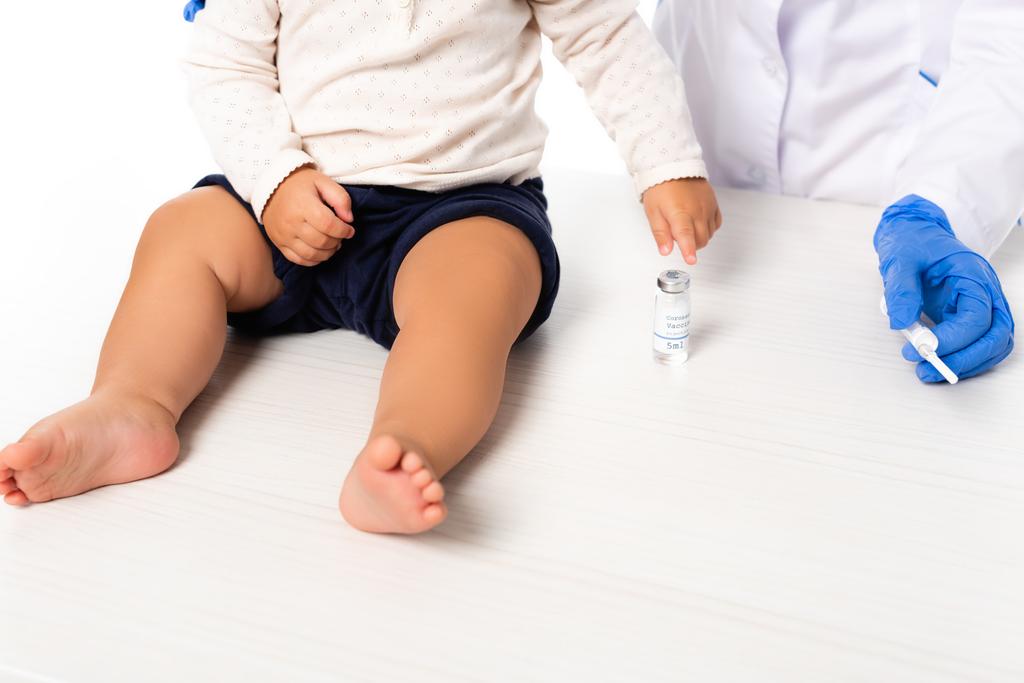Understanding and Addressing Diaper Rash: A Comprehensive Guide for Parents
Diaper rash is a common concern for parents with babies and toddlers. The redness, irritation, and discomfort associated with diaper rash can be distressing for both the child and the caregiver. In this article, we’ll explore what diaper rash is, what causes it, preventive measures, and effective ways to manage and treat this common condition.
What is Diaper Rash?
Diaper rash is a skin irritation that occurs in the diaper-covered region, typically affecting infants and toddlers. It is characterized by redness, inflammation, and discomfort in the area covered by the diaper, including the buttocks, thighs, and genital area. While diaper rash is a common and generally mild condition, it can cause discomfort for the child and concern for parents.
Causes of Diaper Rash:
Understanding the common causes of diaper rash is essential for preventing and managing the condition. Some primary factors include:
- Prolonged Exposure to Moisture: One of the leading causes of diaper rash is prolonged exposure to moisture. Wet diapers, especially when not changed promptly, create a favorable environment for skin irritation.
- Friction: The friction caused by the constant rubbing of the diaper against the baby’s delicate skin can contribute to diaper rash.
- Chafing: Ill-fitting diapers or tight clothing can lead to chafing, exacerbating the risk of diaper rash.
- Irritants in Diapers or Wipes: Some babies may be sensitive to certain materials in diapers or wipes, such as fragrances, dyes, or certain chemicals.
- Introduction of Solid Foods: The change in a baby’s diet, particularly when introducing solid foods, can lead to changes in bowel movements, which may contribute to diaper rash.
- Bacterial or Fungal Infections: In some cases, diaper rash can be caused by a bacterial or fungal infection, such as a yeast infection.
Identifying Diaper Rash:
Diaper rash is typically easy to recognize, but understanding its different forms can help parents address the condition effectively. Common signs and symptoms include:
- Redness: A noticeable redness in the diaper area, often extending to the thighs and buttocks.
- Inflammation: Swelling and inflammation of the skin in the diapered region.
- Warmth to the Touch: The affected area may feel warmer than usual.
- Raised Bumps or Sores: In more severe cases, diaper rash may lead to raised bumps or sores.
- Discomfort: A fussy or irritable baby during diaper changes, signaling discomfort or pain.
Preventive Measures:
Preventing diaper rash is often more manageable than treating it. Here are some preventive measures parents can take:
- Frequent Diaper Changes: Regularly change your baby’s diaper, ideally every two to three hours or more frequently if needed.
- Gentle Cleaning: Use mild, fragrance-free wipes or a soft cloth to clean the diaper area during changes. Avoid wipes with harsh chemicals or fragrances that may irritate the skin.
- Allow Diaper-Free Time: Give your baby some diaper-free time to allow the skin to breathe and reduce moisture.
- Choose Diapers Wisely: Select diapers that are appropriate for your baby’s size and shape, and consider those made from breathable materials. Some babies may be sensitive to certain diaper brands or materials.
- Avoid Tight Clothing: Dress your baby in loose-fitting, breathable clothing to minimize friction and chafing.
- Use a Barrier Cream: Apply a thin layer of diaper rash cream or ointment with zinc oxide to create a protective barrier on your baby’s skin.
- Consider Cloth Diapers: If your baby is prone to diaper rash, using cloth diapers, which allow for better airflow, might be an option worth exploring.
Managing and Treating Diaper Rash:
If despite preventive measures, your baby develops diaper rash, there are several effective ways to manage and treat the condition:
- Keep the Area Clean: During diaper changes, clean the affected area gently with mild soap and water or a diaper wipe. Pat the area dry instead of rubbing to avoid further irritation.
- Apply Diaper Rash Cream: Use a diaper rash cream or ointment with zinc oxide to create a protective barrier on the skin. These products help soothe irritation and promote healing.
- Allow Diaper-Free Time: Increase diaper-free time to allow the skin to breathe and reduce moisture. Place your baby on a waterproof mat or towel to catch any accidents.
- Change Diapers Promptly: Ensure prompt diaper changes to minimize exposure to urine and feces, reducing the risk of further irritation.
- Avoid Tight Diapers: Opt for diapers that are not too tight, allowing airflow and reducing friction.
- Consider Oatmeal Baths: Oatmeal baths can soothe irritated skin. Add colloidal oatmeal to lukewarm bathwater and let your baby soak for 10-15 minutes.
- Consult a Pediatrician: If the diaper rash persists, worsens, or is accompanied by other concerning symptoms, consult your pediatrician. In some cases, a bacterial or fungal infection may require specific medical treatment.
When to Seek Medical Attention:
While most cases of diaper rash can be effectively managed at home, there are instances when medical attention is necessary. Consult your pediatrician if:
- The Rash Persists: If the rash doesn’t improve with home care within a few days.
- Blisters or Sores Develop: If the rash is accompanied by blisters, sores, or open wounds.
- Fever Occurs: If your baby develops a fever in conjunction with the diaper rash.
- Signs of Infection: If you notice signs of infection, such as increasing redness, swelling, or the presence of pus.
Conclusion:
Diaper rash is a common challenge for parents, but with proper preventive measures and effective management, it can often be successfully addressed. Understanding the causes, recognizing the signs, and taking proactive steps to prevent and treat diaper rash can contribute to the comfort and well-being of your baby. Always consult your pediatrician if you have concerns about your baby’s skin or if the rash persists despite home care efforts. With a little care and attention, you can help your baby stay happy, comfortable, and rash-free.













